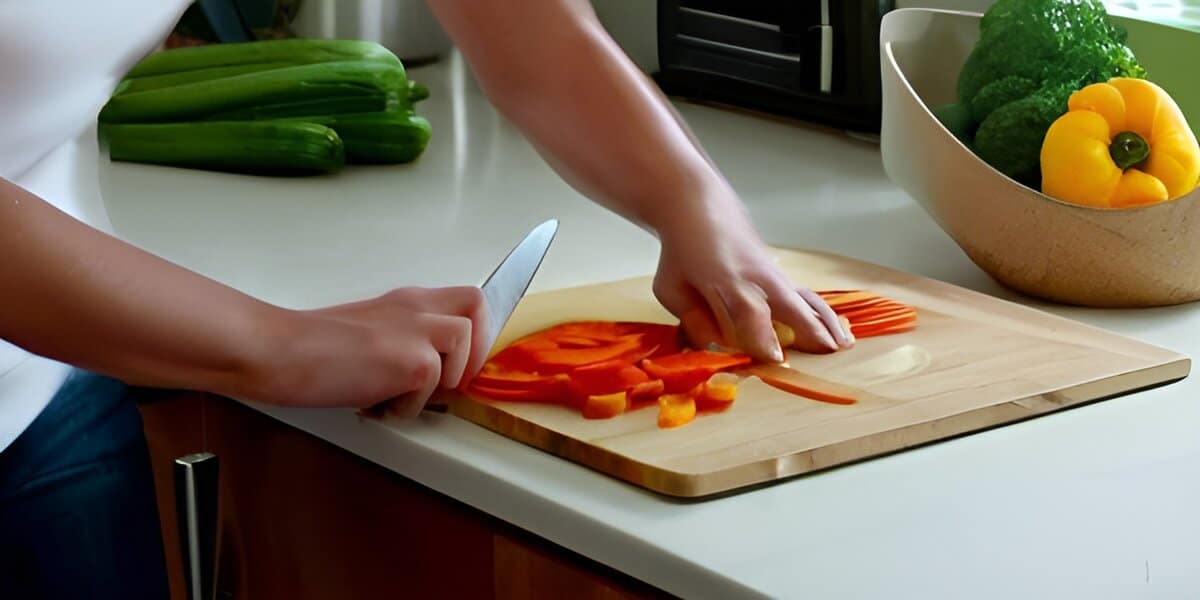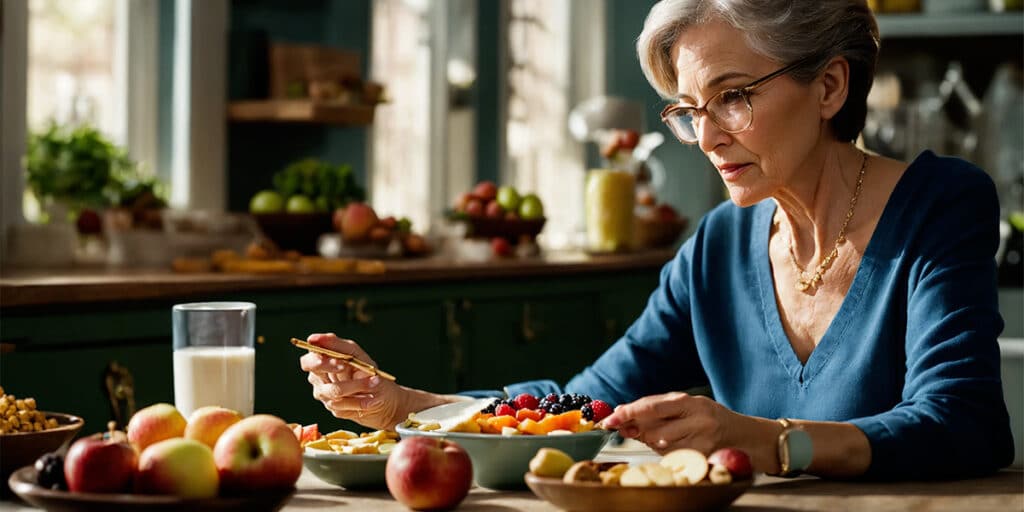In a world filled with tempting treats, finding the right snacks as a Type 2 diabetic can be challenging. The journey to balancing taste and health is a path paved with the need for homemade, crunchy delights.
Dive into this guide where we explore the intricacies of crafting DIY snack recipes that not only satisfy your taste buds but also align with your diabetes management goals.
Understanding the Challenge
Living with Type 2 diabetes often means navigating a world where snacking choices can impact blood sugar levels significantly. The need for snacks that strike a balance between satisfying cravings and maintaining glycemic control is crucial. Let’s explore the landscape of DIY snacks tailored for Type 2 diabetics.
The Benefits of DIY Snacks
Creating DIY (Do-It-Yourself) snacks offers a wealth of benefits for individuals managing type 2 diabetes, a condition that necessitates careful monitoring of blood glucose levels, dietary habits, and overall lifestyle. By preparing snacks at home, those with diabetes can gain greater control over their nutritional intake, ensuring that what they eat contributes positively to their health goals. Here are several key advantages of embracing the DIY approach to snacking for those with type 2 diabetes.
Customized Nutritional Content
One of the primary benefits of making your own snacks is the ability to tailor recipes to meet specific dietary needs. Individuals can adjust ingredients to control carbohydrate intake, increase dietary fiber, and incorporate healthy fats and lean proteins, all of which are crucial for managing blood glucose levels and supporting overall health. Customizing snacks allows for the reduction or elimination of added sugars and unhealthy fats, common in processed foods, which are detrimental to diabetes management.
Improved Blood Sugar Management
DIY snacks can be crafted to have a low Glycemic Index (GI), meaning they have a slower impact on blood glucose levels. Incorporating ingredients like whole grains, nuts, seeds, and legumes, along with fiber-rich fruits and vegetables, can help ensure that snacks provide a steady release of energy without causing sharp spikes in blood sugar. This steady energy release is essential for maintaining optimal blood glucose levels throughout the day.
Enhanced Portion Control
Preparing snacks at home allows individuals to manage portion sizes more effectively, a key factor in dietary control and weight management. Proper portion sizing helps prevent overeating and can contribute to a balanced caloric intake, supporting weight loss or maintenance goals, which are often part of managing type 2 diabetes.
Cost-Effectiveness
Homemade snacks can also be more economical than store-bought alternatives. Buying ingredients in bulk and preparing snacks in batches can save money in the long run. Additionally, DIY snacking reduces the temptation to purchase more expensive and less healthy options when out and about.
Increased Dietary Awareness
The process of preparing your own snacks fosters a deeper understanding of nutrition and how different foods affect blood sugar levels and overall health. This increased awareness can empower individuals to make healthier food choices across all meals, not just snacks.
Variety and Satisfaction
Making your own snacks opens up a world of variety, allowing individuals to explore new flavors and textures that might not be available in pre-packaged options. This variety can make dietary management more enjoyable and sustainable, helping individuals stick to their health goals without feeling deprived.
Tips for Successful DIY Snacking
- Plan Ahead: Spend time each week planning and preparing a variety of snacks to ensure you have healthy options readily available.
- Focus on Whole Foods: Base your snacks on whole, minimally processed ingredients to maximize nutritional benefits.
- Keep It Balanced: Aim for a mix of macronutrients (carbohydrates, proteins, and fats) in each snack to support blood sugar stability and satiety.
- Monitor Your Response: Pay attention to how different snacks affect your blood glucose levels to better understand which ingredients work best for you.
| Snack | Serving Size | Calories | Carbs (g) | Fiber (g) | Protein (g) | Fats (g) |
|---|---|---|---|---|---|---|
| Almond Trail Mix | 1/4 cup | 120 | 10 | 3 | 4 | 8 |
| Vegetable Sticks with Hummus | 1 cup | 50 | 6 | 2 | 2 | 3 |
| Greek Yogurt Parfait | 1 serving | 150 | 15 | 4 | 12 | 6 |
| Apple Slices with Peanut Butter | 1 medium apple + 1 tbsp | 160 | 15 | 4 | 7 | 10 |
Homemade Snack Ideas for Managing Type 2 Diabetes
These recipes focus on balancing flavors and nutrients while keeping an eye on the glycemic index to ensure blood sugar levels remain stable. By incorporating whole, nutrient-dense ingredients, these snacks not only satisfy cravings but also contribute to a balanced diet, making them a fantastic choice for anyone looking to enjoy tasty treats without spiking their blood sugar.
Wholesome Seed Crackers
Seed crackers are a powerhouse of nutrition, offering a crunchy, satisfying snack that’s low in carbohydrates and high in fiber. They’re made with a blend of flaxseeds, chia seeds, pumpkin seeds, and sunflower seeds, all of which are known for their health benefits, including omega-3 fatty acids, protein, and essential minerals.
Ingredients:
- 1 cup of mixed seeds (flaxseed, chia seeds, pumpkin seeds, sunflower seeds)
- 1 cup of water
- A pinch of salt
- Optional: herbs and spices for flavor (rosemary, thyme, garlic powder)
Directions:
- Preheat your oven to 350°F (175°C).
- In a mixing bowl, combine the seeds and water. Let the mixture sit for 15-30 minutes, allowing the chia and flaxseeds to gelatinize and bind the mixture.
- Spread the mixture thinly and evenly on a baking sheet lined with parchment paper. Sprinkle with salt and your choice of herbs and spices.
- Bake for 30-40 minutes, or until crispy and golden brown. Let them cool before breaking them into pieces.
Crunchy Veggie Chips
Veggie chips are a great way to get your vegetable intake and enjoy a crunchy snack. Using kale, zucchini, or beets, you can create a variety of flavors and textures that are both satisfying and nutrient-rich.
Ingredients:
- Your choice of vegetables (kale, zucchini, beets)
- Olive oil
- Salt
- Optional: spices like paprika, turmeric, or black pepper
Directions:
- Preheat your oven to 300°F (150°C).
- Thinly slice your chosen vegetables and pat them dry to remove excess moisture.
- In a bowl, toss the vegetable slices with a small amount of olive oil and salt. Add any additional spices as desired.
- Arrange the slices in a single layer on a baking sheet lined with parchment paper.
- Bake until crisp, about 20-30 minutes for leafy vegetables and up to 40 minutes for root vegetables, flipping halfway through.
Nutty Quinoa Crunch
Quinoa offers a unique, nutty flavor and a satisfying crunch when baked. Mixed with nuts and a hint of sweetness, this snack is packed with protein and fiber, making it an excellent choice for steady energy.
Ingredients:
- 1 cup cooked quinoa
- ½ cup mixed nuts (almonds, walnuts, pecans), roughly chopped
- 2 tablespoons maple syrup or a sugar-free sweetener
- A pinch of cinnamon
Directions:
- Preheat your oven to 375°F (190°C).
- In a bowl, mix the cooked quinoa, chopped nuts, sweetener, and cinnamon until well combined.
- Spread the mixture on a baking sheet lined with parchment paper, creating a thin, even layer.
- Bake for 20-25 minutes or until the quinoa mixture is dry and crispy, stirring occasionally to ensure even baking.
- Let it cool before serving.
These DIY snack recipes for type 2 diabetics are not only nutritious but also delicious, offering a variety of textures and flavors to satisfy any craving. By choosing to prepare your snacks, you gain control over the ingredients, ensuring they are appropriate for managing blood sugar levels while still enjoying the pleasure of tasty treats.
DIY Snack Recipes for Type 2 Diabetics: Your FAQs Answered
Can I indulge in crunchy snacks as a Type 2 diabetic?
Absolutely! Opt for homemade crunchy snacks to ensure they align with your dietary needs.
How can I control the glycemic impact of my snacks?
Choose ingredients with lower glycemic indices and monitor portion sizes.
What are some easy DIY snack recipes for beginners?
Start with cinnamon almonds, kale chips, or roasted chickpeas for delicious and beginner-friendly options.
Are these snacks suitable for the whole family?
Certainly! These snacks are not only diabetic-friendly but also enjoyed by the entire family.
Can I prepare these snacks in advance?
Many of these snacks can be prepared in batches, offering convenient options for on-the-go.
How do I ensure my homemade snacks stay fresh?
Store snacks in airtight containers to maintain freshness and crunchiness.
Are there alternatives for those with nut allergies?
Yes, explore seeds like pumpkin or sunflower seeds as nut-free alternatives.
Can these snacks be incorporated into a balanced diet?
Absolutely! These snacks, when enjoyed in moderation, complement a balanced and healthy diet.
Are there seasonal variations for these snacks?
Experiment with seasonal produce to add variety and freshness to your snacks.
Can I customize these recipes to suit my taste preferences?
Indeed! Feel free to adjust seasonings and ingredients to align with your unique taste preferences.
Citations
- “Effects of Omega-3 Fatty Acid Supplementation on Glucose Control and Lipid Levels in Type 2 Diabetes: A Meta-Analysis,” published in PLOS ONE, October 2015.
- “Nuts as a Replacement for Carbohydrates in the Diabetic Diet,” featured in Diabetes Care, August 2011.
- “Dietary Fiber for the Treatment of Type 2 Diabetes Mellitus: A Meta-Analysis,” found in The Journal of the American Board of Family Medicine, January-February 2012.
- “The Effect of Lifestyle Intervention and Metformin on Preventing or Delaying Diabetes among Women with and without Gestational Diabetes: The Diabetes Prevention Program Outcomes Study 10-Year Follow-Up,” in The Journal of Clinical Endocrinology & Metabolism, April 2015.








